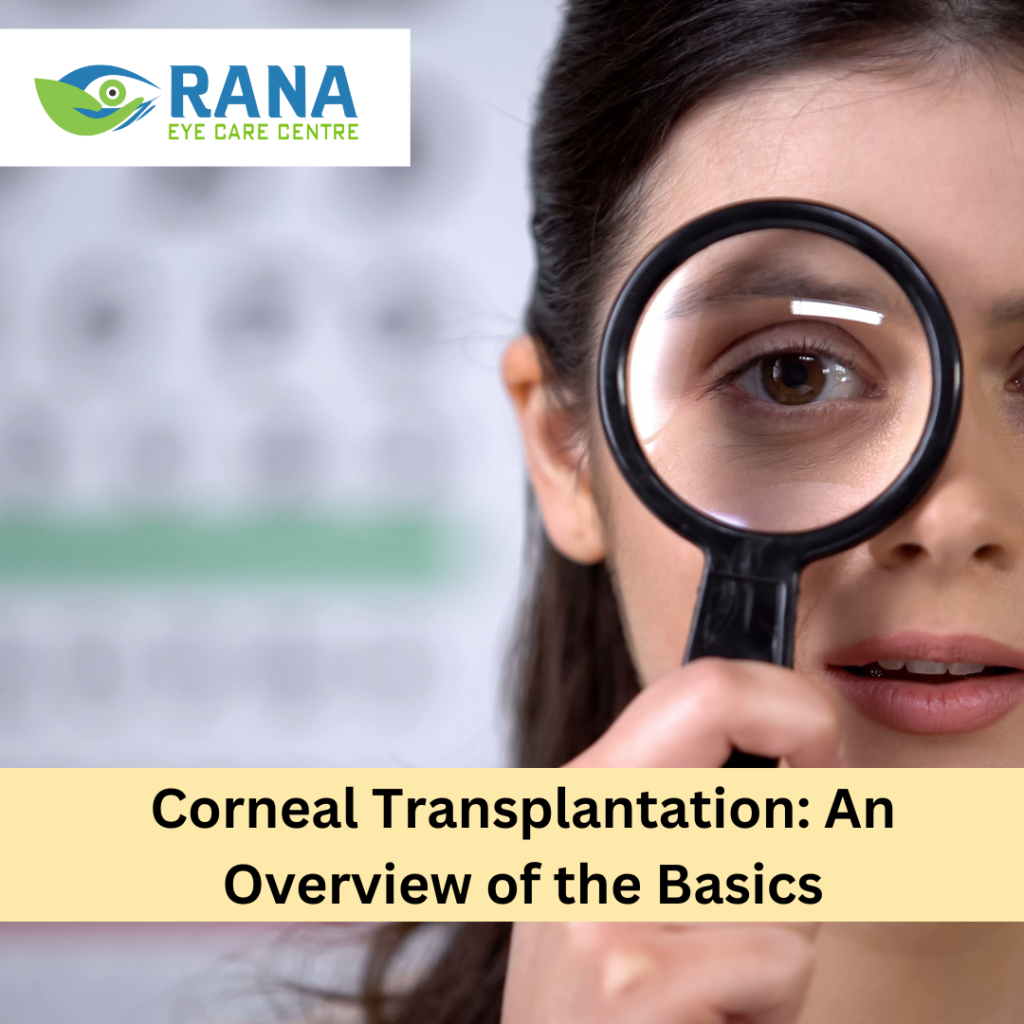Corneal Transplantation: An Overview of the Basics
Your eyes have a transparent layer called the cornea, which plays a crucial role in directing light to the retina for clear vision. However, the cornea can be damaged due to various factors, including infectious corneal ulcers, genetic eye disorders, corneal scarring after an eye injury, problems with previous eye surgeries, keratoconus, corneal opacification, hyperemia, or edema. When the cornea is damaged, it can lead to vision problems that may require a corneal transplant for restoration.
Corneal transplant procedures begin with comprehensive tests to evaluate your overall health and determine your eligibility for the treatment. Your doctor may advise you to avoid aspirin prior to the transplant. Additionally, antibiotic eye drops are prescribed before the procedure to minimize the risk of infection.
On the day of the transplant, you will receive either local or general anesthesia. The damaged corneal tissue will be replaced with healthy donor tissue. Unlike other organ transplants, corneal transplants do not require strict tissue matching, making it relatively easier to obtain corneal tissue from deceased donors.
The duration of the procedure typically ranges from 30 to 60 minutes, depending on the extent of tissue damage and other factors. The specific technique employed by your doctor will be determined based on these factors. The available options include:
Penetrating Keratoplasty (PK): This method involves removing a button-sized portion of the damaged tissue and replacing it with a full-thickness cornea obtained from a donor through an incision.
Endothelial Keratoplasty (EK): In this technique, the damaged back corneal tissue affecting the endothelium and Descemet’s membrane is removed. The donor tissue can be divided into two halves, which are selectively transplanted.
Anterior Lamellar Keratoplasty (ALK): This approach involves the removal of the front corneal tissue, leaving the inner layers intact.
Artificial Cornea Transplant: Instead of using a donor cornea, an artificial cornea (keratoprosthesis) is used. This option is suitable for individuals who do not meet the criteria for standard corneal transplant procedures.
Your eye doctor will determine the most appropriate technique based on a thorough assessment of your eyes. It’s important to note that corneal tissue is not obtained from individuals who died of unknown causes or had medical issues to ensure the safety of the donor tissue. If you have any concerns, it is important to discuss them with your doctor.
Following the corneal transplant procedure, the recovery phase is generally painless. To facilitate a smooth recovery and prevent complications, it is crucial to follow your eye doctor’s instructions. Here are some tips that can aid in recovery and prevent complications:
Precautions: Take necessary precautions, such as wearing safety goggles or glasses, to protect your eyes during the initial recovery period. Your doctor may also recommend lying on your back for a specific duration to minimize strain on the eyes.
Gradual Resumption of Regular Tasks: Engage in regular activities gradually to prevent eye injuries and strain during the recovery phase. Follow your doctor’s guidance regarding activities like reading, watching television, or using electronic devices.
Medication: Use prescribed painkillers to manage any discomfort during the recovery process. Additionally, follow your doctor’s instructions for using eye drops and medications to prevent infection and promote healing.
Routine Examinations: Schedule regular follow-up visits with your eye doctor to monitor the progress of the transplant and identify any potential complications. Ongoing monitoring is essential, as complications can arise even years after the surgery.
A corneal transplant involves replacing damaged tissue with healthy tissue, which can potentially improve your vision. However, vision correction may take several months. Initially, your vision may be worse, as the new cornea requires time to adjust.
However, over time and with familiarity, your vision should improve. Rana Eye Hospital prioritizes patient safety and health. We adhere to NABH International standards and utilize advanced medical technology. Ensuring the motivation and satisfaction of both patients and staff is crucial to us. We strive to be the best in healthcare and are committed to the well-being of our patients and staff.






No Comments